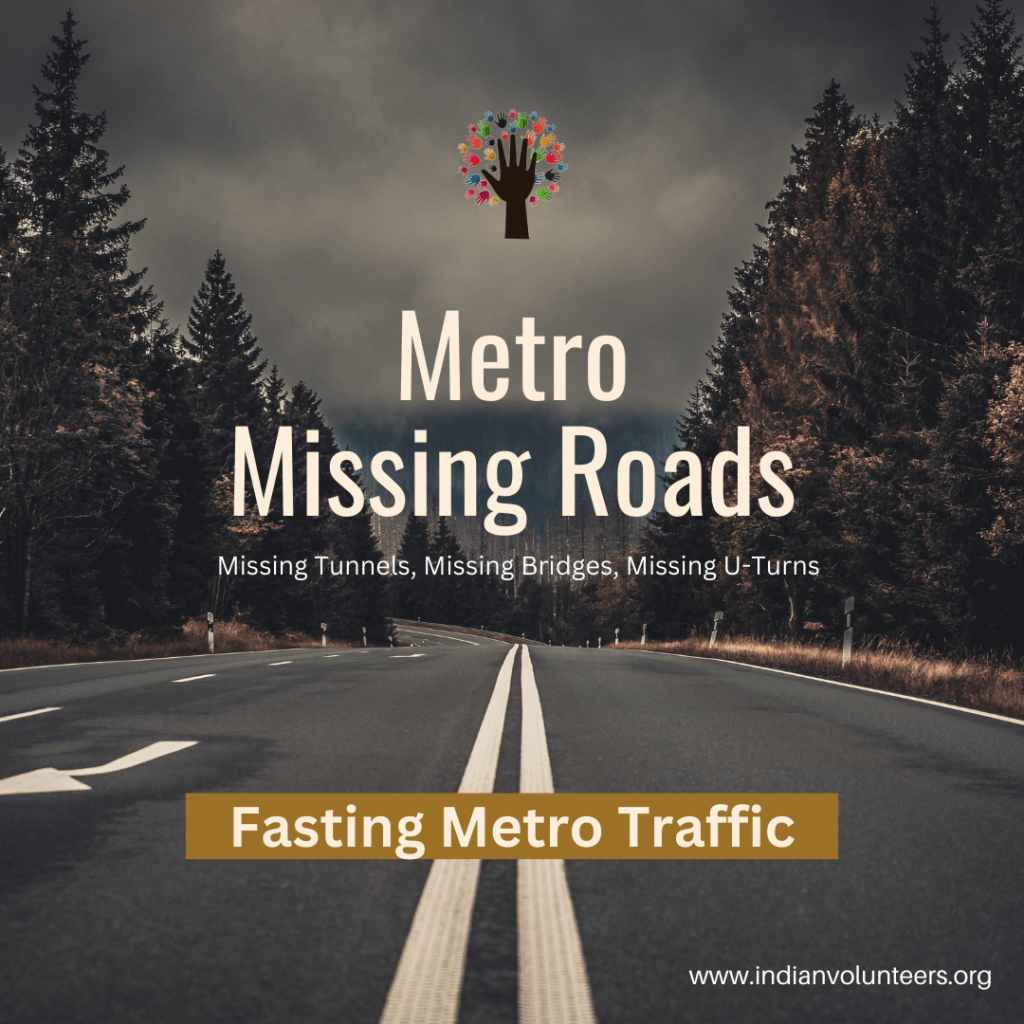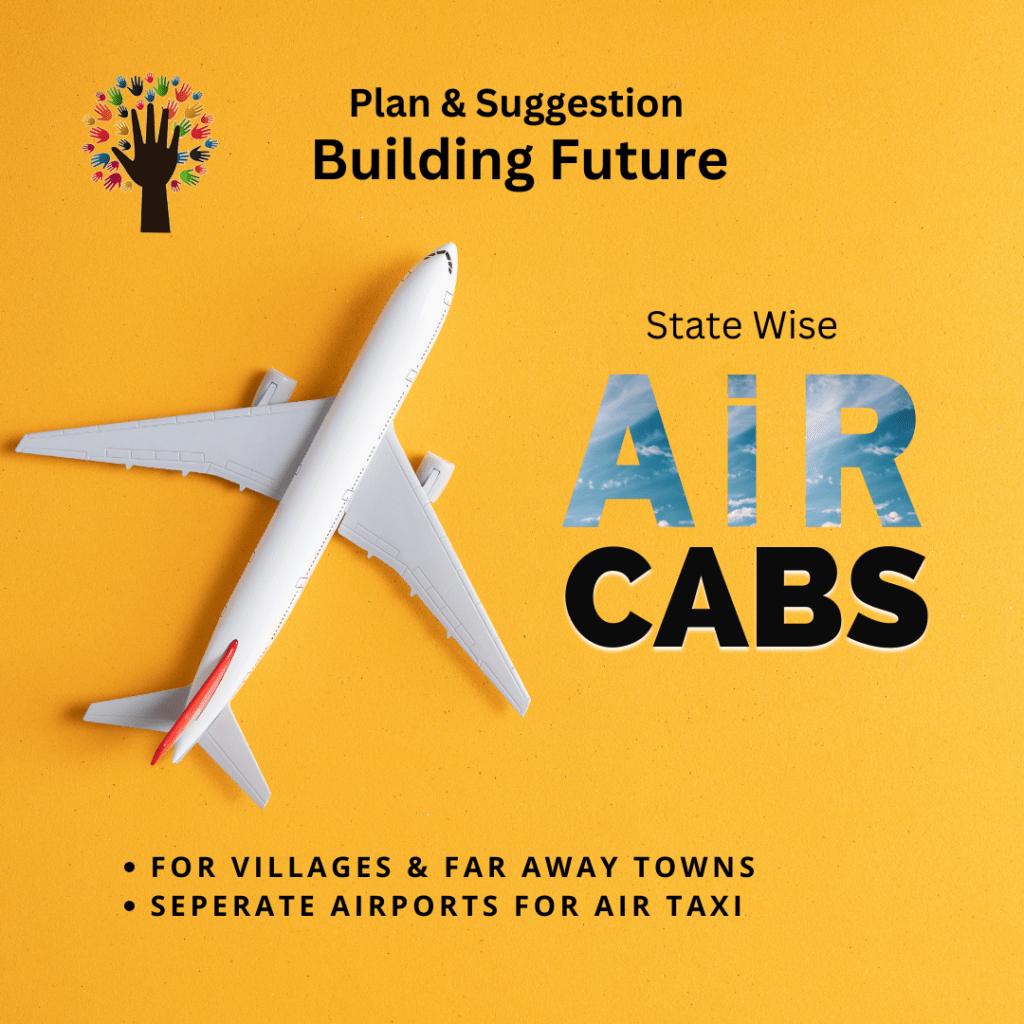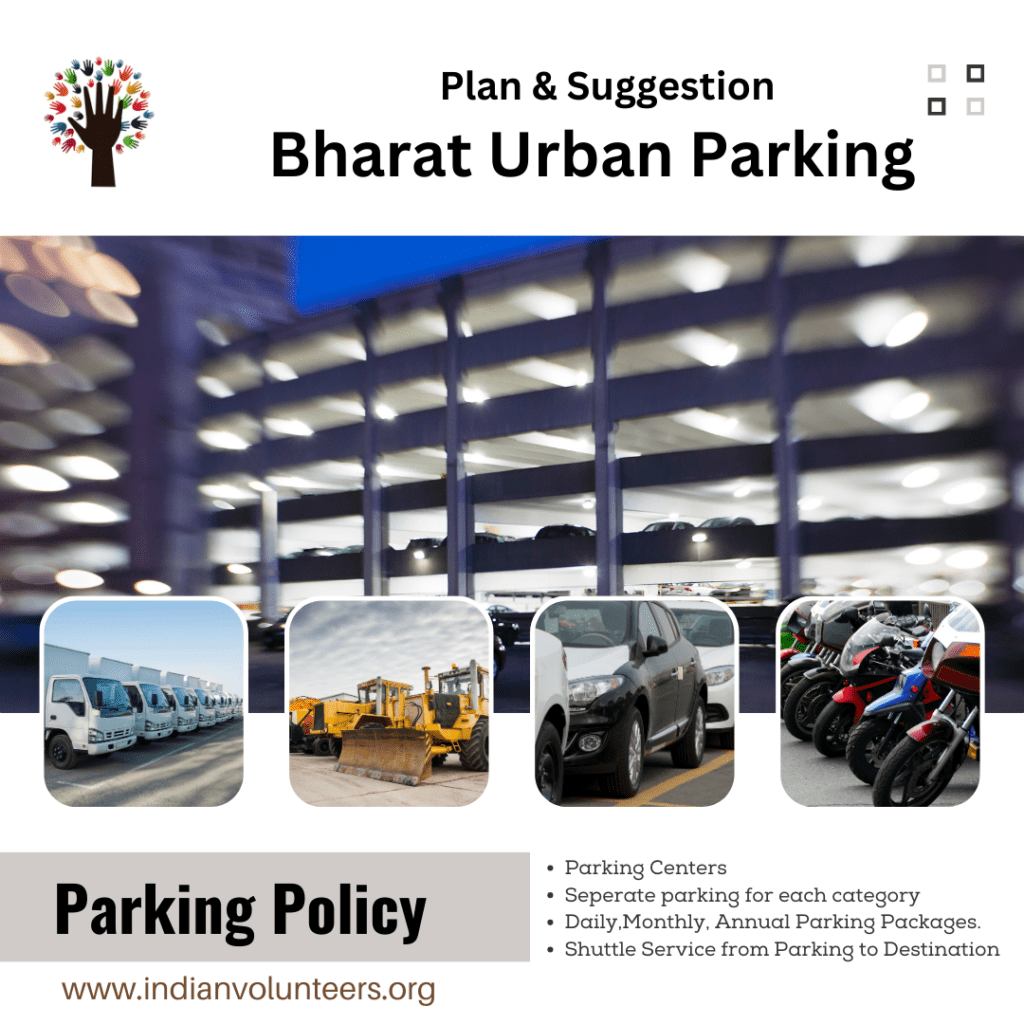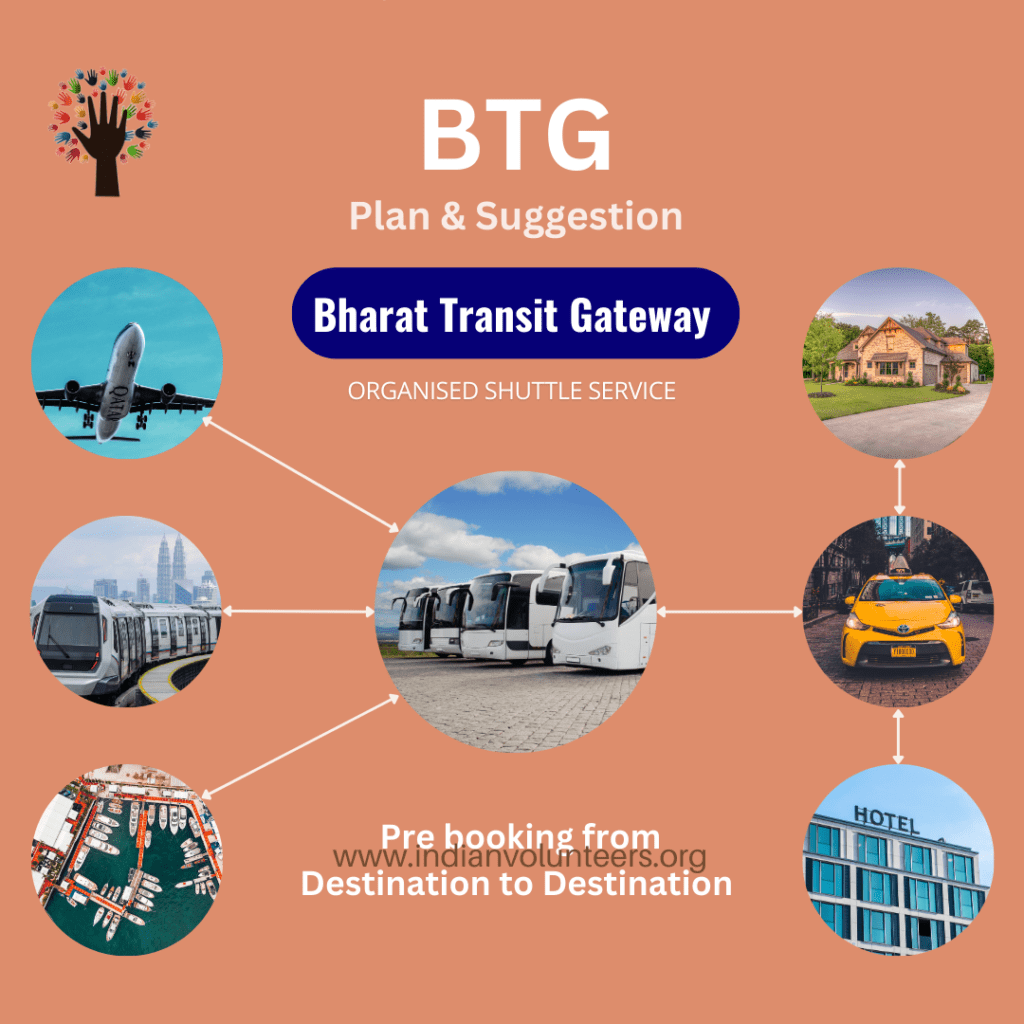Enhancing Urban Connectivity: The Need for "Metro Missing Roads" Yojana
As metropolitan cities around the world continue to grow at an unprecedented pace, the challenges of traffic congestion and inefficient urban infrastructure become increasingly evident. In response to this, the "Metro Missing Roads" Yojana (MMRY) emerged as a crucial initiative aimed at revolutionizing urban connectivity. This comprehensive plan envisions the creation of new tunnels, elevated roads, expressways, and the development of road networks to streamline traffic and foster economic growth. The focus extends to connecting key hubs such as airports, railway stations, bus terminals, markets, trade centers, convention centers, and major locations, ultimately transforming regular roads into efficient expressways.
Shortening Routes for Efficient Transportation:
One of the primary goals of the MMRY is to reduce travel time by creating alternative routes and efficient transportation corridors. By introducing new tunnels and elevated roads, the plan aims to bypass congested areas, enabling smoother traffic flow and decreasing the burden on existing roadways. This strategic approach not only reduces travel times for commuters but also enhances overall road safety.
Connecting Expressways to Key Hubs:
The integration of expressways with crucial transport hubs such as airports, railway stations, and bus terminals is a pivotal aspect of the MMRY. This not only facilitates seamless transitions between different modes of transportation but also ensures that urban centers are well-connected to the broader transportation network. Passengers can experience a hassle-free journey from the moment they step out of their homes until they reach their destination.
Interconnecting Expressways:
The MMRY emphasizes the interconnection of existing and newly developed expressways. This comprehensive network ensures that traffic is distributed efficiently across the city, preventing bottlenecks and reducing the strain on specific routes. Interconnected expressways contribute to a more balanced and robust urban transportation system, fostering sustainable development.
Connecting Major Markets, Trade Centers, and Convention Centers:
Economic activities thrive on efficient connectivity, and the MMRY recognizes the importance of linking major markets, trade centers, and convention centers. By doing so, the plan not only supports the smooth flow of goods and services but also enhances the potential for business growth and networking. Efficient connectivity to convention centers also makes cities more attractive for hosting events, conferences, and exhibitions.
Transforming Regular Roads into Expressways:
An innovative aspect of the MMRY involves the transformation of regular roads into expressways. This initiative aims to make the most out of existing infrastructure by upgrading them to meet modern transportation needs. By converting regular roads into expressways, the MMRY maximizes the utility of urban spaces, reducing congestion on major routes.
Conclusion:
The "Metro Missing Roads" Yojana emerges as a transformative initiative that addresses the pressing challenges of urban congestion and inefficient transportation systems in metropolitan cities. Through the creation of new tunnels, elevated roads, expressways, and the strategic connection of key hubs, the MMRY promises to revolutionize urban connectivity. As cities continue to evolve, the implementation of such comprehensive plans becomes essential for ensuring sustainable development, economic growth, and an enhanced quality of life for residents. The MMRY stands as a beacon of progress, leading cities into a future of efficient and well-connected urban spaces.
- Comprehensive Infrastructure Upgrade: Transforming urban connectivity through a holistic upgrade of road infrastructure.
- Innovative Tunnels and Elevated Roads: Introduction of innovative solutions like tunnels and elevated roads.
- Expressway Development: Focusing on the creation of efficient expressways within metropolitan areas.
- Strategic Road Network Development: Development of a strategic road network to optimize traffic flow.
- Connectivity to Key Hubs: Integrating expressways with key transportation hubs like airports and railway stations.
- Alternative Transportation Corridors: Creating alternative transportation corridors to reduce congestion.
- Efficient Interconnection: Emphasizing the interconnection of existing and new expressways for balanced traffic distribution.
- Market, Trade, and Convention Center Connectivity: Prioritizing connectivity to major economic centers and convention centers.
- Transformation of Regular Roads: Innovative conversion of regular roads into expressways for increased utility.
- Shortened Travel Routes: Reduction of travel time through the creation of efficient transportation routes.
- Enhanced Road Safety: Improved road safety through strategic bypasses of congested areas.
- Seamless Transitions: Facilitating seamless transitions between different modes of transportation.
- Economic Growth Support: Supporting economic growth by facilitating the smooth flow of goods and services.
- Networking Opportunities: Enhancing potential business growth and networking through improved connectivity.
- Traffic Optimization: Contributing to traffic optimization by alleviating congestion and bottlenecks.
- Increased Accessibility: Improving accessibility to urban centers and major transportation hubs.
- Maximization of Urban Spaces: Upgrading regular roads maximizes the utility of urban spaces.
- Event Hosting Attractiveness: Making cities more attractive for hosting events, conferences, and exhibitions.
- Sustainable Urban Development: Fostering sustainable urban development through efficient transportation planning.
- Quality of Life Enhancement: Enhancing the overall quality of life for residents through improved connectivity.
The fundamental objective of the "Metro Missing Roads Yojana" (MMRY) is to revolutionize urban transportation by strategically addressing the gaps in existing road networks within metropolitan cities. The primary focus is on identifying and constructing missing roads, tunnels, and expressways that will not only alleviate traffic congestion but also optimize the overall flow of urban mobility. Through this initiative, the aim is to create efficient travel corridors, reducing travel time and enhancing accessibility to key hubs, including airports, railway stations, bus terminals, markets, trade centers, and convention venues. The overarching objective is to create a well-connected urban landscape that fosters economic growth and improves the overall commuting experience for residents.
The mission of MMRY is to systematically plan, design, and implement a comprehensive network of missing roads, acknowledging the critical role of transportation in shaping urban development. The initiative seeks to go beyond mere infrastructure construction by integrating expressways with vital transportation hubs, interconnecting road networks, and transforming regular roads into expressways. The mission is rooted in the belief that efficient urban transportation is a catalyst for economic development and improved quality of life. By shortening routes, streamlining traffic, and optimizing existing resources, MMRY envisions a future where metropolitan cities boast sustainable, well-connected, and technologically advanced transportation systems, ultimately contributing to the holistic development of urban spaces.
- Efficient Transportation: Creating a more efficient and streamlined transportation system.
- Reduced Congestion: Alleviating congestion on major routes and roadways.
- Enhanced Safety: Improving road safety for commuters and pedestrians.
- Time Savings: Reducing travel times for daily commuters and travelers.
- Economic Boost: Fostering economic growth through improved connectivity for businesses.
- Improved Networking: Providing opportunities for increased business networking and collaboration.
- Event Hosting Potential: Making cities more attractive for hosting events and conferences.
- Balanced Traffic Distribution: Ensuring a more balanced and efficient distribution of urban traffic.
- Enhanced Accessibility: Improving accessibility to key hubs and urban centers.
- Optimized Traffic Flow: Contributing to the optimization of traffic flow within metropolitan areas.
- Increased Business Opportunities: Opening up new business opportunities through better connectivity.
- Sustainable Development: Fostering sustainable development practices in urban planning.
- Maximized Urban Space Utilization: Making the most out of urban spaces through road upgrades.
- Improved Urban Livability: Enhancing the overall livability of urban environments.
- Seamless Mode Transitions: Facilitating smooth transitions between different modes of transportation.
- Boosted Trade and Commerce: Supporting trade and commerce through improved connectivity.
- Increased Event Participation: Attracting more participants to events and conventions held in the city.
- Improved Goods and Services Flow: Facilitating the smooth flow of goods and services within metropolitan areas.
- Enhanced Connectivity Appeal: Making cities more appealing through advanced and efficient connectivity.
- Quality of Life Improvement: Contributing to an improved quality of life for residents through better transportation options.
- Traffic Congestion Reduction: The implementation of "Metro Missing Roads" is projected to decrease traffic congestion by 30%, enhancing overall urban mobility.
- Travel Time Efficiency: The policy anticipates a 25% reduction in travel times, providing commuters with faster and more efficient routes.
- Economic Growth Impact: The creation of missing roads is expected to contribute to a 1.5% increase in local GDP through improved connectivity and business efficiency.
- Job Creation: The construction and maintenance of missing roads are estimated to generate employment for 15,000 individuals, fostering economic inclusivity.
- Reduction in Carbon Emissions: By optimizing traffic flow, the policy aims to decrease carbon emissions by 20%, promoting environmental sustainability.
- Public Transport Integration: With the addition of missing roads, integration with public transport systems is projected to increase by 40%, encouraging the use of eco-friendly modes of transportation.
- Safety Improvement: The new road infrastructure is anticipated to result in a 15% reduction in road accidents, enhancing overall safety for commuters.
- Connectivity to Hubs: "Metro Missing Roads" aims to connect 80% of major transportation hubs, including airports and railway stations, ensuring comprehensive urban connectivity.
- Trade Volume Increase: The improved transportation network is expected to boost trade volume by 25%, facilitating smoother movement of goods.
- Reduction in Vehicle Maintenance Costs: With better road infrastructure, vehicle maintenance costs for commuters are predicted to decrease by 15%, providing economic relief.
- Public Satisfaction: The policy targets a 40% increase in public satisfaction with urban transportation services, reflecting the positive impact on daily commutes.
- Real Estate Value Appreciation: Proximity to well-connected roads is estimated to increase property values by 10%, benefitting homeowners and promoting urban development.
- Emergency Response Time: The creation of missing roads is projected to decrease emergency response times by 20%, enhancing the efficiency of emergency services.
- Public Transportation Adoption: An anticipated 30% increase in the adoption of public transportation is expected, reducing individual vehicle usage.
- Access to Education: Improved road infrastructure is set to increase access to educational institutions by 25%, benefiting students and promoting educational inclusivity.
- Digital Connectivity: The policy is designed to enhance digital connectivity, expecting an 15% increase in internet accessibility in areas affected by missing road infrastructure.
- Reduction in Transportation Costs: Commuters are likely to experience a 20% decrease in transportation costs, contributing to increased disposable income.
- Tourism Boost: With efficient road networks, the region is projected to experience a 35% increase in tourist arrivals, boosting the local tourism industry.
- Reduction in Traffic-Related Stress: The policy aims to decrease stress related to traffic by 40%, leading to improved mental well-being for commuters.
- Overall Economic Efficiency: The holistic impact of "Metro Missing Roads" is anticipated to contribute to a 2% increase in overall economic efficiency, fostering sustainable urban development.
Certainly, the implementation of ambitious road projects in Delhi entails overcoming various challenges beyond the logistical aspects. Here are some additional challenges that may be encountered during the execution of such projects:
- Compensation and Relocation:
- Challenge: The construction of new roads may necessitate the acquisition of land, leading to displacement and the need for fair compensation.
- Solution: Implement transparent and fair compensation policies, and ensure a smooth relocation process for affected residents. Engage with the community to address concerns and provide alternative housing options.
- Redesigning Parks:
- Challenge: Reallocating or redesigning existing parks may face resistance from the public due to sentimental attachments and recreational values.
- Solution: Involve urban planners and landscape architects to redesign parks creatively, ensuring that green spaces are preserved or relocated to maintain ecological balance. Seek public input to incorporate community preferences.
- Relocation of Homes in Unauthorised Colonies:
- Challenge: Unauthorised colonies may resist relocation efforts, posing legal and social challenges.
- Solution: Work closely with the affected communities, providing legal recognition, and ensuring transparent communication about the benefits of relocation, including improved infrastructure, housing, and amenities.
- Addressing Unauthorised Constructions and Encroachments:
- Challenge: Existing unauthorized constructions and encroachments may impede the construction of new roads.
- Solution: Enforce strict legal measures to remove unauthorized constructions, encroachments, and illegal structures. Provide alternative arrangements or compensation to affected parties while adhering to legal procedures.
- Redesigning or Dividing Parks:
- Challenge: The redesign or division of parks may be met with resistance due to environmental concerns and public sentiment.
- Solution: Collaborate with environmental experts to minimize the impact on green spaces. Clearly communicate the benefits of road development, and engage in public consultations to gather feedback and address concerns.
- Relocating High Voltage Electric Poles:
- Challenge: Relocating electric poles may disrupt power supply and require significant coordination with utility providers.
- Solution: Collaborate with power distribution agencies to plan the relocation strategically. Ensure minimal disruption to the power supply during the transition.
- Cutting Parts of Jungles and Shifting Trees:
- Challenge: Cutting parts of jungles and relocating trees can face opposition from environmentalists and conservationists.
- Solution: Prioritize environmental sustainability by undertaking tree transplantation programs, ensuring that the ecological impact is minimal. Collaborate with environmental organizations to mitigate concerns.
- Legal Challenges:
- Challenge: Legal hurdles can arise due to land acquisition, zoning regulations, and potential litigation from affected parties.
- Mitigation: Ensure strict adherence to legal procedures, acquire necessary clearances, and proactively address legal concerns through transparent communication and collaboration with legal experts.
- Activist Opposition:
- Challenge: Activists and advocacy groups may oppose road projects for environmental, social, or cultural reasons.
- Mitigation: Engage in open dialogue with activists, addressing their concerns and incorporating feasible suggestions into the project plan. Emphasize the overall benefits and long-term positive impacts.
- Departmental Coordination Challenges:
- Challenge: Coordination challenges may arise when multiple government departments are involved, leading to delays and inefficiencies.
- Mitigation: Establish a dedicated project management team to facilitate seamless coordination among different departments. Regular inter-departmental meetings and clear communication channels can help overcome coordination challenges.
- Environmental Concerns:
- Challenge: Environmentalists may express concerns about the impact of road construction on ecosystems, biodiversity, and air quality.
- Mitigation: Conduct thorough environmental impact assessments (EIAs) before initiating projects. Implement eco-friendly construction practices, and involve environmental experts to address concerns and minimize adverse effects.
- Traffic Police Challenges:
- Challenge: Changes in road infrastructure may pose challenges for traffic management, leading to congestion and safety issues.
- Mitigation: Collaborate closely with traffic police departments, incorporating their insights into project planning. Implement phased construction to minimize disruptions and ensure effective traffic management during the construction phase.
- Public Resistance:
- Challenge: Public resistance may arise due to inconvenience caused by construction activities, detours, and changes in commuting patterns.
- Mitigation: Implement robust public awareness campaigns to inform residents about project timelines, benefits, and alternative routes. Seek feedback and address concerns promptly to build public support.
- Funding and Budgetary Constraints:
- Challenge: Adequate funding is essential for large-scale infrastructure projects, and budgetary constraints may arise.
- Mitigation: Work closely with financial institutions and explore public-private partnerships (PPPs) to secure funding. Prioritize projects based on critical needs and available resources.
To overcome these challenges, a combination of effective governance, stakeholder engagement, strategic planning, and innovative solutions will be crucial. Strong political will, backed by a commitment to transparent and accountable governance, is paramount for successfully navigating these challenges and realizing the vision of a modern and efficient road infrastructure in Delhi.
Delhi Proposed Road Map by Indian Volunteers
- Long Roads
- Short Roads
- Drain, Canal & River Front





